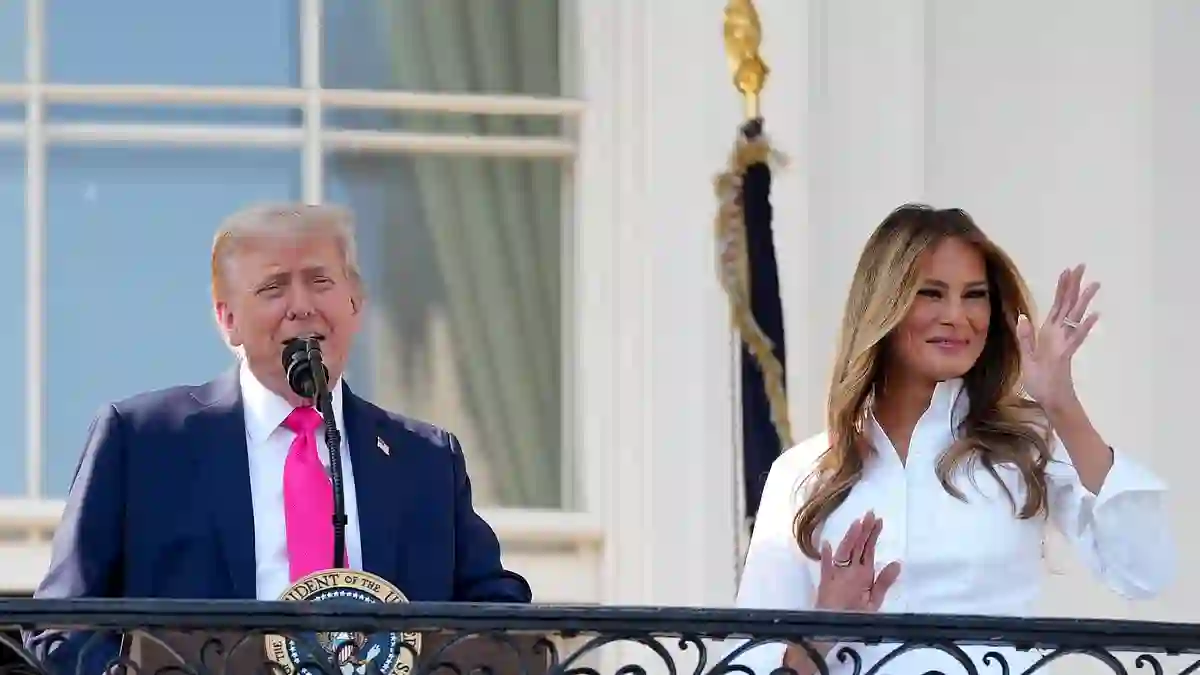While most Americans celebrated the Fourth of July with fireworks and barbecues, President Donald Trump turned the day into a personal political milestone—signing his long-awaited, multi-trillion-dollar legislation into law with all the theatrical flair he’s known for.
In front of a packed South Lawn at the White House—complete with military flyovers and a rare appearance by Melania Trump in a crisp white dress—Trump officially inked the “One Big Beautiful Bill,” a sweeping package of tax cuts and spending priorities Republicans have been working on for years.
A Fireworks-Ready Celebration at the White House
Timed to coincide with the country’s 249th birthday, the ceremony wasn’t your typical bill signing.
There were cheers, speeches, and even a giant gavel, which Trump theatrically banged after House Speaker Mike Johnson handed it over.
Standing before Cabinet members, staffers, and supporters, Trump declared this moment “my greatest victory yet.”
He wasn’t shy about touting the bill’s size either.
“It’s the biggest bill ever signed of its kind,” he said, crediting it with delivering on promises from tax relief to border security.
What’s Actually Inside the ‘Big, Beautiful Bill’?
The bill—nearly 900 pages long—packs in an ambitious mix of conservative priorities and Trump-branded policies. Here’s a breakdown of what’s included:
-
Extension of 2017 tax cuts, now costing an estimated $4 trillion over 10 years
-
Elimination of federal taxes on overtime and tips, something Trump pushed heavily on the campaign trail
-
Doubling of the child tax credit to $2,200
-
Creation of $1,000 “Trump investment accounts” for babies born after 2024
-
Up to $10,000 auto loan interest deduction for U.S.-made vehicles
-
Expanded SALT deductions (state and local taxes) up to $40,000 annually for five years—especially appealing to conservatives in high-tax blue states
There’s also a big military boost: around $150 billion for a new “Golden Dome” missile defense system, and billions more for ICE, Border Patrol, and shipbuilding.
But at What Cost? Spending Cuts and Political Blowback
All that spending had to be paid for somehow.
Republicans included $1.2 trillion in cuts, mainly targeting programs like Medicaid, SNAP (food stamps), and Biden-era renewable energy subsidies.
This triggered outrage not only from Democrats but also from some Republicans, especially moderates and libertarian-minded members.
Rep. Thomas Massie of Kentucky and Sen. Rand Paul of the same state voted against it, citing concerns over the growing deficit.
Even billionaire Elon Musk weighed in, calling the bill’s price tag “political suicide.”
A Nail-Biting Path Through Congress
Despite the celebratory mood at the White House, the bill’s passage was anything but smooth.
Behind the scenes, it was a chaotic scramble of negotiations, party infighting, and last-minute vote wrangling.
The Senate passed the bill 51-50, with Vice President JD Vance casting the tie-breaking vote.
In the House, the margin was even thinner—just one vote to spare.
A procedural vote before final passage broke the record for the longest House vote in history, clocking in at over 7 hours and 20 minutes.
Freedom Caucus members and moderates had been at odds.
Conservatives wanted more spending cuts and a full repeal of Biden’s green subsidies.
Moderates were worried about the impact on their re-election chances, particularly cuts to Medicaid.
Trump Works the Phones to Seal the Deal
According to aides, Trump spent days calling reluctant Republicans one-on-one to lock in their support.
“He’s been working the phones pretty consistently,” one administration official told Politico. And in the end, it worked.
By July 3, the bill had cleared its final legislative hurdle, just in time for the July 4th deadline Trump had been aiming for.
Democrats Put Up a Fight – Literally All Night
While Republicans were counting votes, Democrats were stalling for time.
House Minority Leader Hakeem Jeffries launched into a record-breaking 8-hour, 45-minute floor speech early Thursday morning, detailing how the bill’s cuts would hurt ordinary Americans.
His speech broke former Speaker Kevin McCarthy’s old record, but despite the drama, it wasn’t enough to stop the bill’s progress.
As Jeffries droned on, some of his colleagues could be seen with their eyes shut, heads nodding off.
A Deeply Divisive Law with Broad Impacts
The One Big Beautiful Bill Act will have ripple effects across the economy and public life for years to come.
Supporters call it a game-changer for the middle class, small businesses, and national defense.
Critics warn it will widen the deficit, hurt vulnerable Americans, and favor wealthier individuals.
Speaker Mike Johnson claimed, “We’re delivering on our promise to make America great again.”
But with Medicaid cuts and rollback of green energy funding, progressives argue that millions will be left worse off.
What Happens Next?
Now signed into law, the real-world impact of the bill will start to show over the coming months and years.
Will the promised economic boom follow? Or will critics be proven right about its risks?
One thing’s certain—Trump and the GOP will be running on this legislation come 2026, using it as a symbol of bold action and America-first policies.
Whether that message resonates with voters across the political spectrum remains to be seen.



